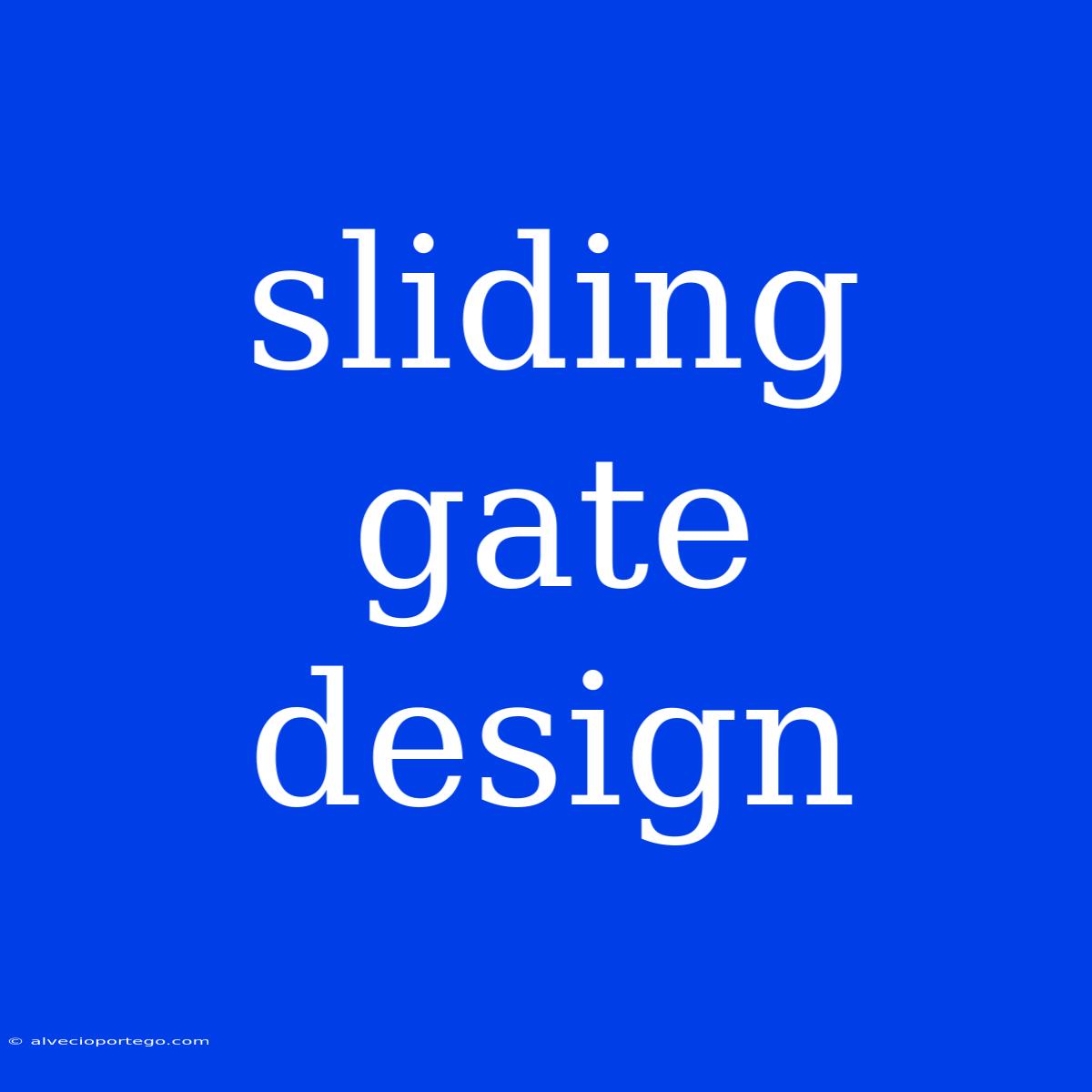Sliding Gate Design: A Comprehensive Guide
A sliding gate is a popular choice for residential and commercial properties, offering a balance of security, style, and functionality. Unlike swing gates, sliding gates operate horizontally, requiring minimal space to open and close. This makes them ideal for properties with limited driveway space or where a swing gate could obstruct traffic. This guide will delve into the essential elements of sliding gate design, equipping you with the knowledge to make informed decisions for your property.
Key Components of a Sliding Gate:
1. Gate Panels:
- Material: The gate panels can be constructed from various materials, each with unique characteristics.
- Aluminum: Lightweight, durable, and corrosion-resistant.
- Steel: Strong and robust, often chosen for security purposes.
- Wood: Natural aesthetic appeal, but requires regular maintenance.
- Wrought Iron: Elegant and decorative, offering a classic look.
- Design: Gate panels can be customized with different styles, including:
- Solid: Offers maximum privacy and security.
- Open: Provides visibility and allows airflow.
- Combination: Combines solid and open sections for a balanced design.
2. Gate Track:
- Material: Tracks are typically made from:
- Steel: Durable and resistant to wear and tear.
- Aluminum: Lightweight and corrosion-resistant.
- Installation: Tracks can be installed:
- Above Ground: Visible and straightforward to install.
- Below Ground: Concealed, offering a cleaner aesthetic.
3. Gate Rollers:
- Type: Rollers come in two main types:
- Ball Bearing Rollers: Offer smooth and quiet operation.
- Nylon Rollers: More budget-friendly but may generate some noise.
- Durability: Choose rollers made from high-quality materials to ensure longevity and minimal maintenance.
4. Gate Motor:
- Type:
- Linear Actuator: A robust motor ideal for heavy gates.
- Rotary Actuator: Compact and often used for lighter gates.
- Power: The motor's power should match the gate's weight and size for smooth operation.
5. Gate Automation System:
- Features: Automation systems can include:
- Remote Control: Conveniently open and close the gate from your vehicle.
- Keypad: Provide access control with a keypad.
- Safety Sensors: Ensure the gate stops if an obstruction is detected.
Considerations for Sliding Gate Design:
1. Budget: Determine a budget for your sliding gate project, factoring in materials, labor, and automation. 2. Security: If security is a priority, consider solid gate panels, sturdy materials, and robust automation features. 3. Aesthetics: Choose a design that complements your property's architecture and style. 4. Space: Consider the available space for the gate to slide and the track's installation. 5. Climate: Choose materials and finishes appropriate for your local climate to prevent corrosion and damage. 6. Maintenance: Understand the ongoing maintenance requirements of your chosen materials and automation system.
Conclusion:
Designing a sliding gate involves careful consideration of various factors. By understanding the key components, weighing your needs and budget, and consulting with experienced professionals, you can create a sliding gate that enhances security, functionality, and curb appeal.

